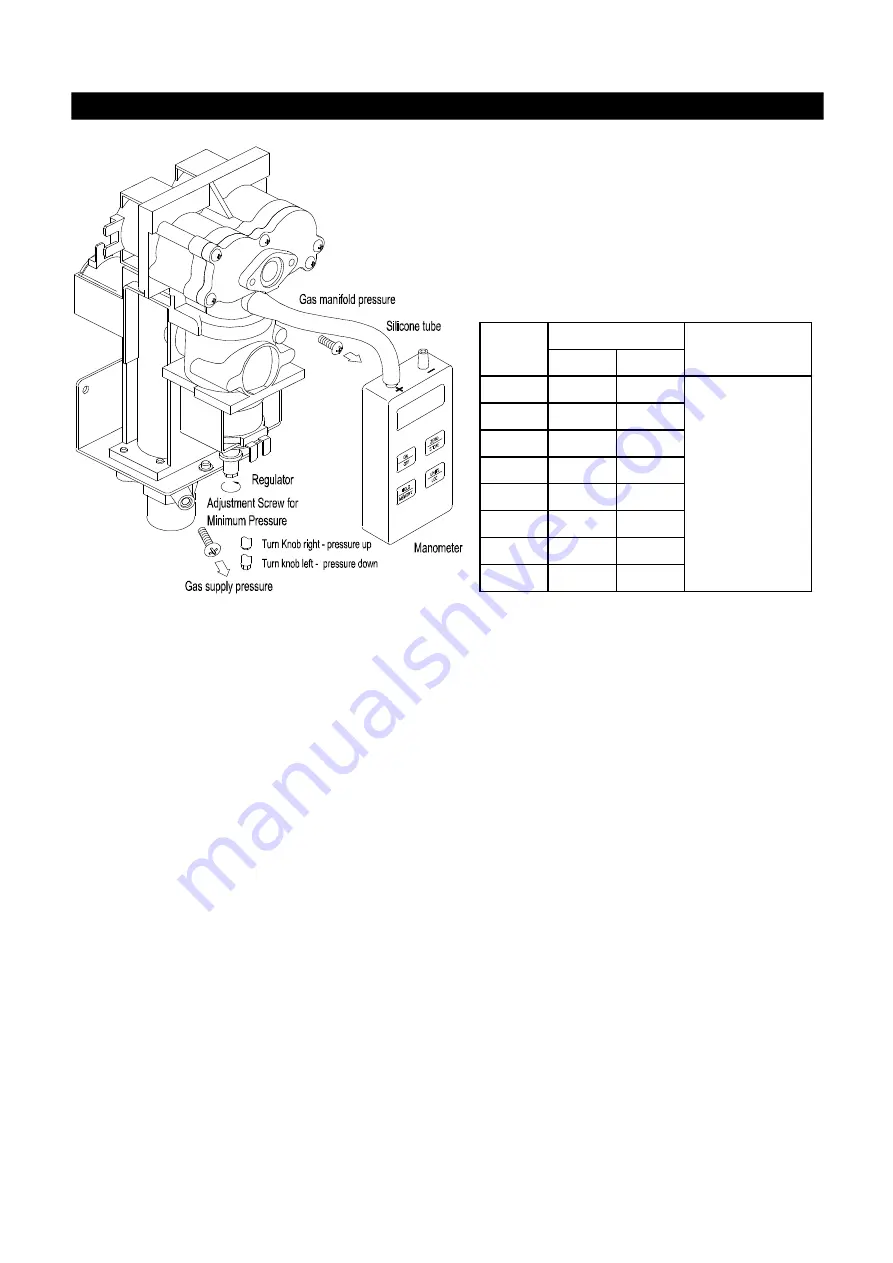
24
Checking Gas Combustion Specifications
Figure 1:
The gas valve is designed with both test ports for gas supply pressure to the unit, and manifold pressure. Refer to
Figure 1 for locations of the test ports on the gas valve.
Check manometer reading of low fire manifold pressure
against unit combustion specifications on p.12. If low
fire manifold pressure needs to be adjusted, loosen the
nut securing the adjustment knob on the bottom of the
gas valve (refer to Figure 1) and adjust to correct setting.
NOTE: Manifold Gas Pressure should only be ad-
justed on low Fire
NOTE: If gas supply pressure drops below 3.5" WC
unit will not have enough gas volume for max fire!
NOTE: Recirculation pump must be OFF when
checking Manifold Gas Pressure.
HOW TO CHECK GAS SUPPLY PRESSURE
Turn off power source and turn off gas supply to the
unit.
Remove the front cover from the unit.
Remove the gas supply pressure test port screw and
connect manometer to this port; turn on the gas to
the water heater.
Turn the water heater on and open multiple taps to
force unit into high fire; check gas supply pressure at
the test port with a manometer with unit in high fire.
1.
2.
3.
HOW TO CHECK MANIFOLD GAS PRESSURE
While power and gas are off to the unit, open any hot
tap to flush and fill the tank completely with cold water.
Close the running tap and turn power and gas back
on to the unit; set temperature to 131F.
The unit should fire up to bring the internal storage
up to set temperature even without any tap open; this
is standby mode.
1.
2.
3.
4. Wait for 10 seconds after the start of standby mode
combustion and check gas supply pressure and mani-
fold gas pressure at the test ports with a manometer.
4.
Gas Supply
Min
Max
Pressure
GU20
0.9 "WC 1.6 "WC
GU26
0.9 "WC 2.4 "WC
GU28
0.5 "WC 1.8 "WC
GU32
0.5 "WC 2.5 "WC NG 3.5~10.5 "WC
GU20DV 0.9 "WC 1.6 "WC
LP 8~14 "WC
GU26DV 0.9 "WC 2.4 "WC
GU28DV 0.4 "WC 1.75 "WC
GU32DV 0.4 "WC 2.4 "WC
Manifold Pressure
Model












































